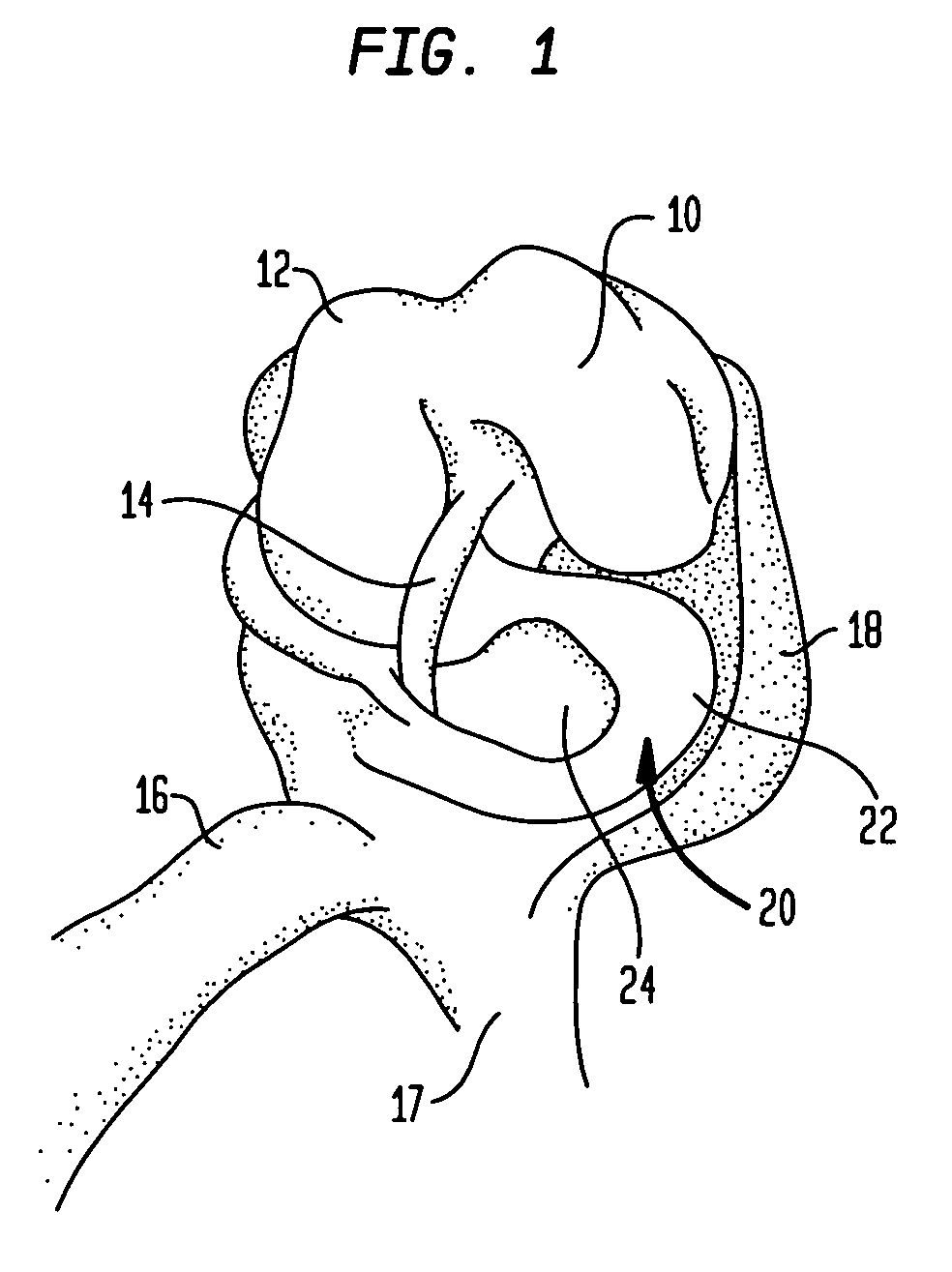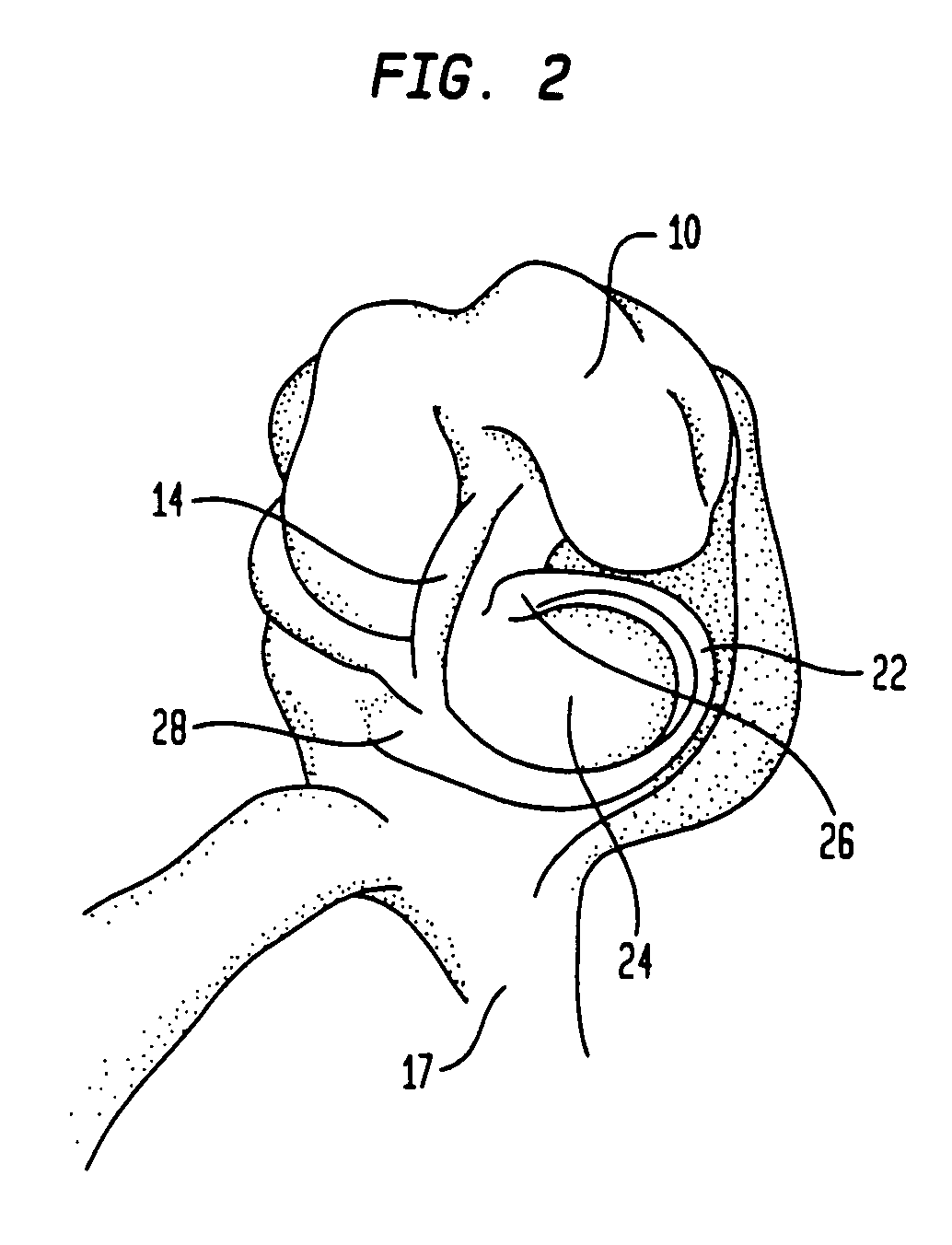Meniscal and tibial implants
a technology of meniscus and implants, applied in the field of surgical implants, can solve the problems of inability to reproduce the mechanical properties of a normal meniscus, inability to function and move, and the lack of functional features of the normal meniscus in the typical existing knee replacement, etc., and achieve the effect of high mobility and stable join
- Summary
- Abstract
- Description
- Claims
- Application Information
AI Technical Summary
Benefits of technology
Problems solved by technology
Method used
Image
Examples
Embodiment Construction
[0052]Referring to FIG. 1 there is shown, for purposes of reference, an open knee joint capsule including a lateral femoral condylar surface 10 and a medial femoral condylar surface 12. The anterior cruciate ligament 14 is shown running through the joint. The quadriceps 16 is shown coupled to the tibia 17 and the lateral collateral ligament 18 is shown connecting the tibia and the femur. The lateral meniscus 20 which includes a rim area 22 is located above the tibial plateau 24.
[0053]Referring to FIG. 2, there is shown the joint capsule of FIG. 1 with the inner portion of the meniscus 20 removed leaving meniscal rim 22. In the preferred method, which will be discussed below, the incision / resection of the meniscus 20 is made within or at the border of what is known as the red zone of the meniscus, i.e., the vascularized region of the meniscus. The resection of the inner part of meniscus 20 leaves meniscal horns 26, 28 in place. Since the meniscal rim 22 remains, all the attachment po...
PUM
| Property | Measurement | Unit |
|---|---|---|
| depth | aaaaa | aaaaa |
| depth | aaaaa | aaaaa |
| depth | aaaaa | aaaaa |
Abstract
Description
Claims
Application Information
 Login to View More
Login to View More - R&D
- Intellectual Property
- Life Sciences
- Materials
- Tech Scout
- Unparalleled Data Quality
- Higher Quality Content
- 60% Fewer Hallucinations
Browse by: Latest US Patents, China's latest patents, Technical Efficacy Thesaurus, Application Domain, Technology Topic, Popular Technical Reports.
© 2025 PatSnap. All rights reserved.Legal|Privacy policy|Modern Slavery Act Transparency Statement|Sitemap|About US| Contact US: help@patsnap.com



